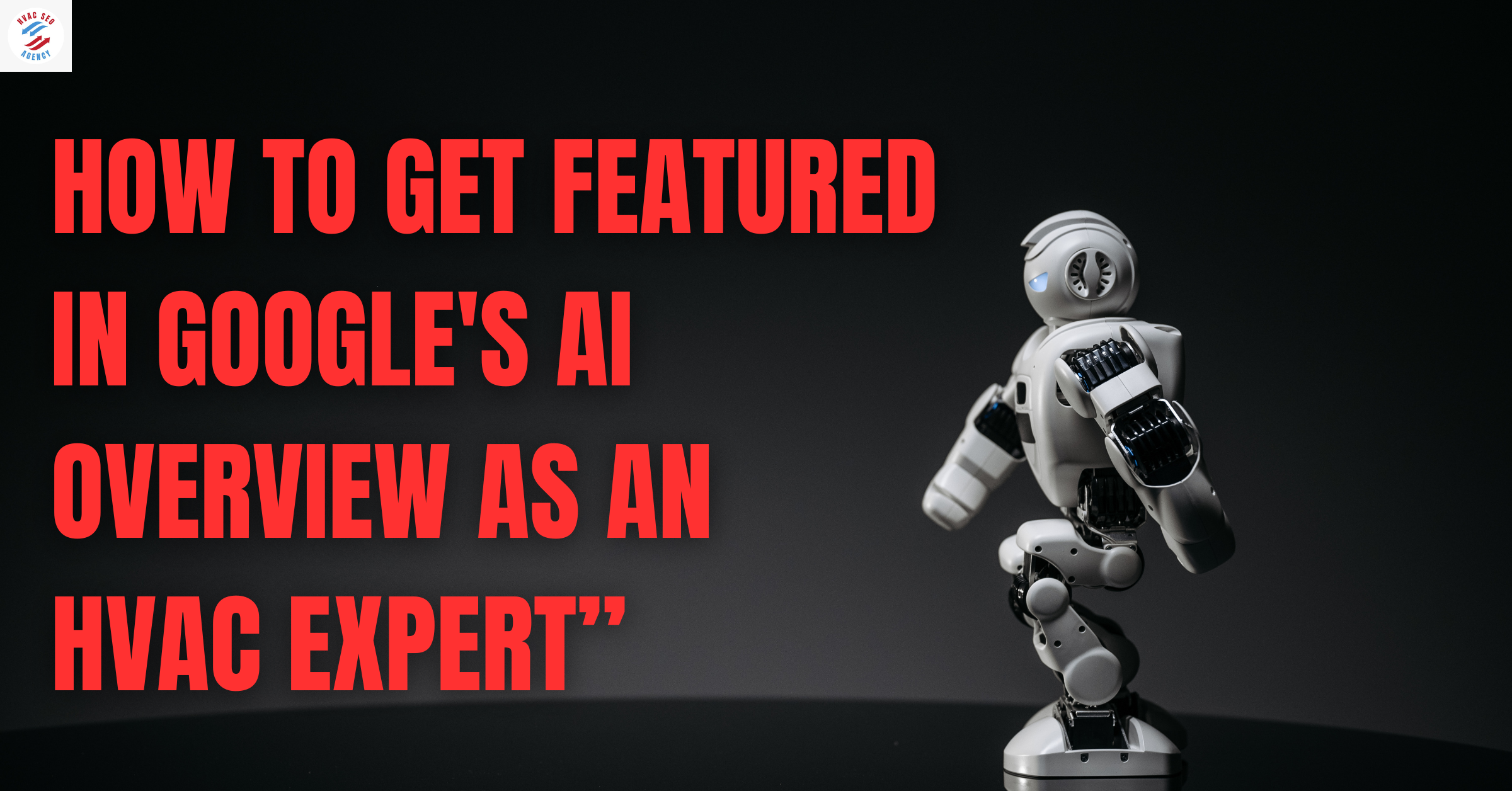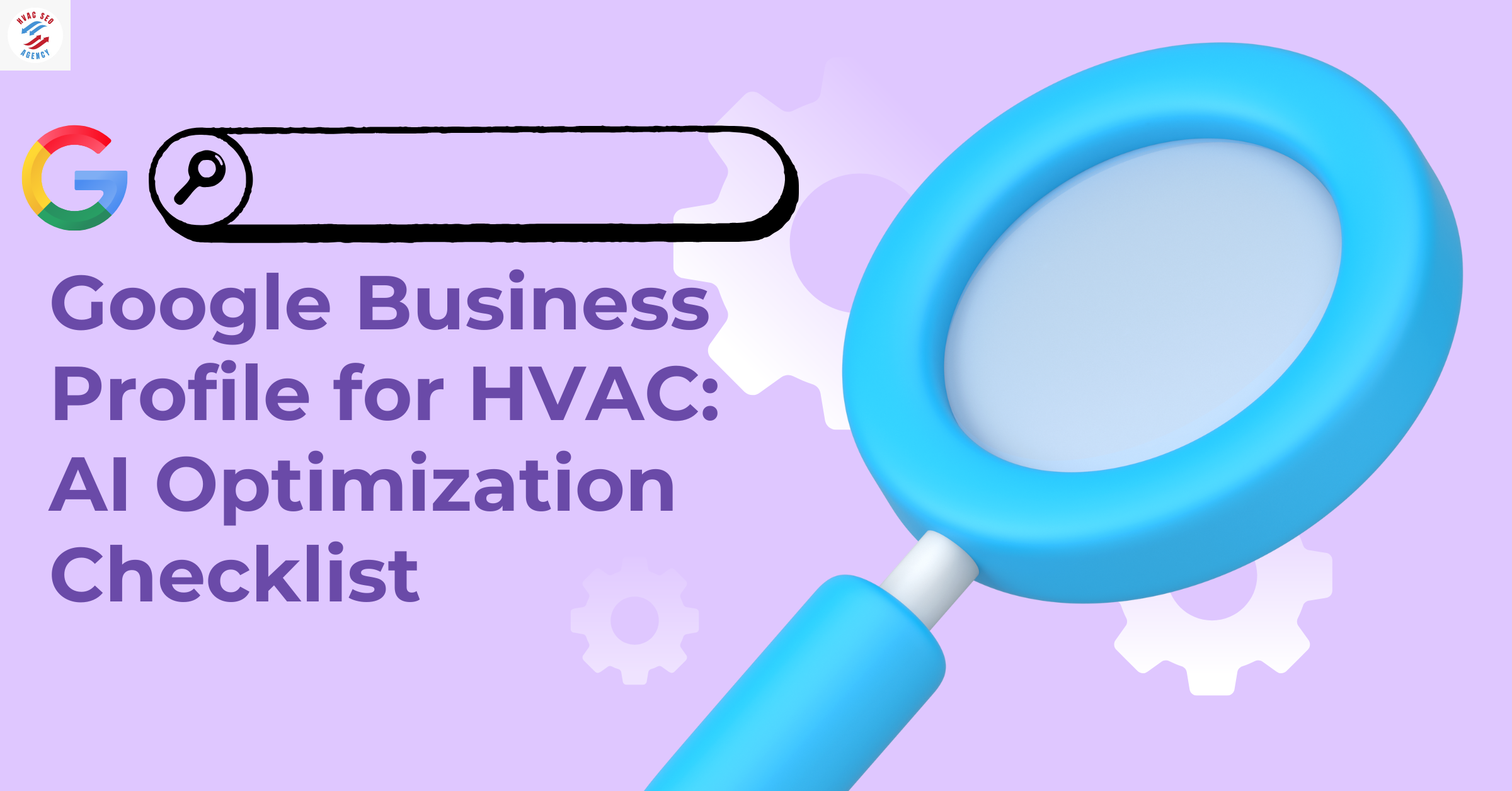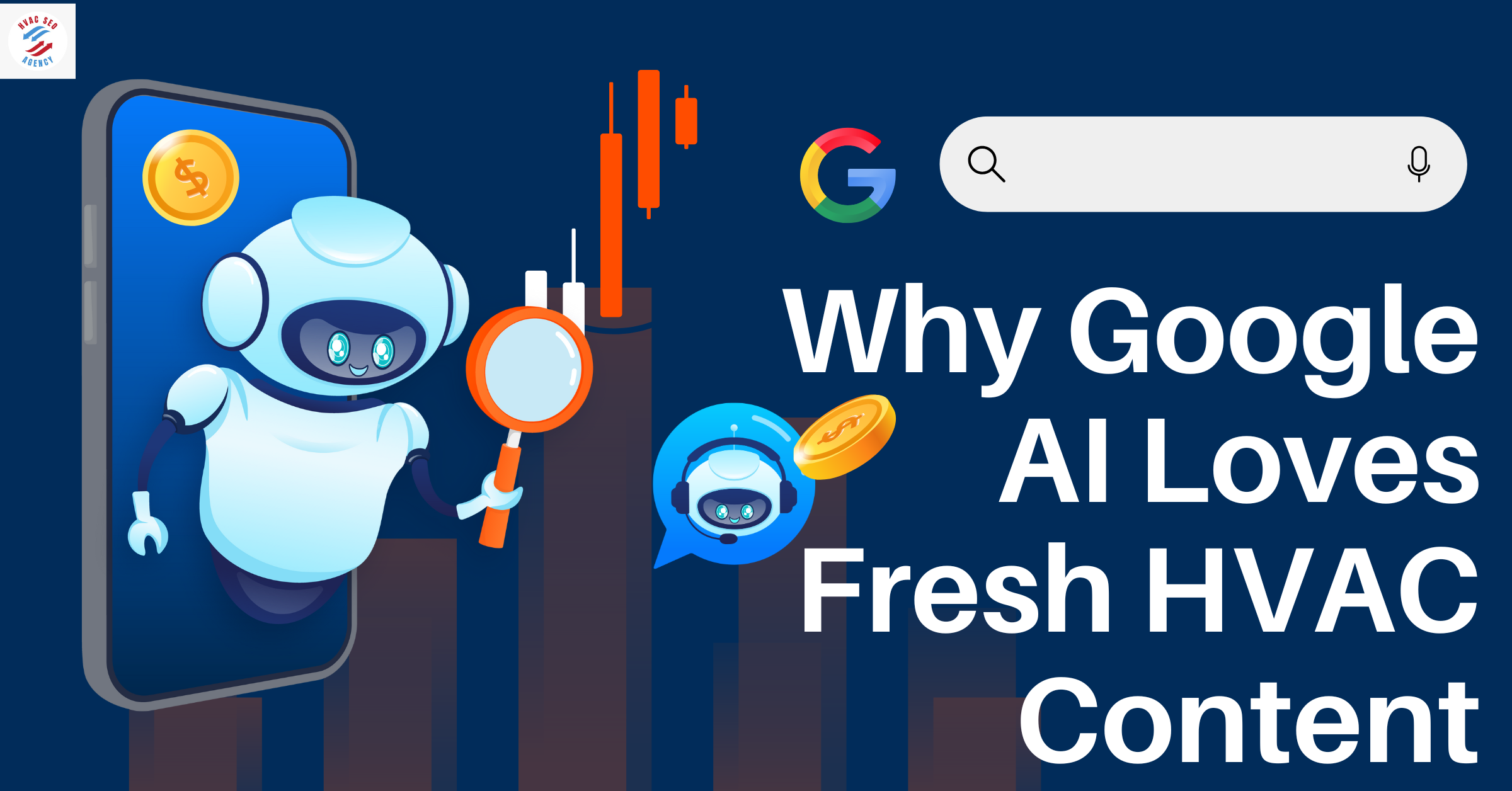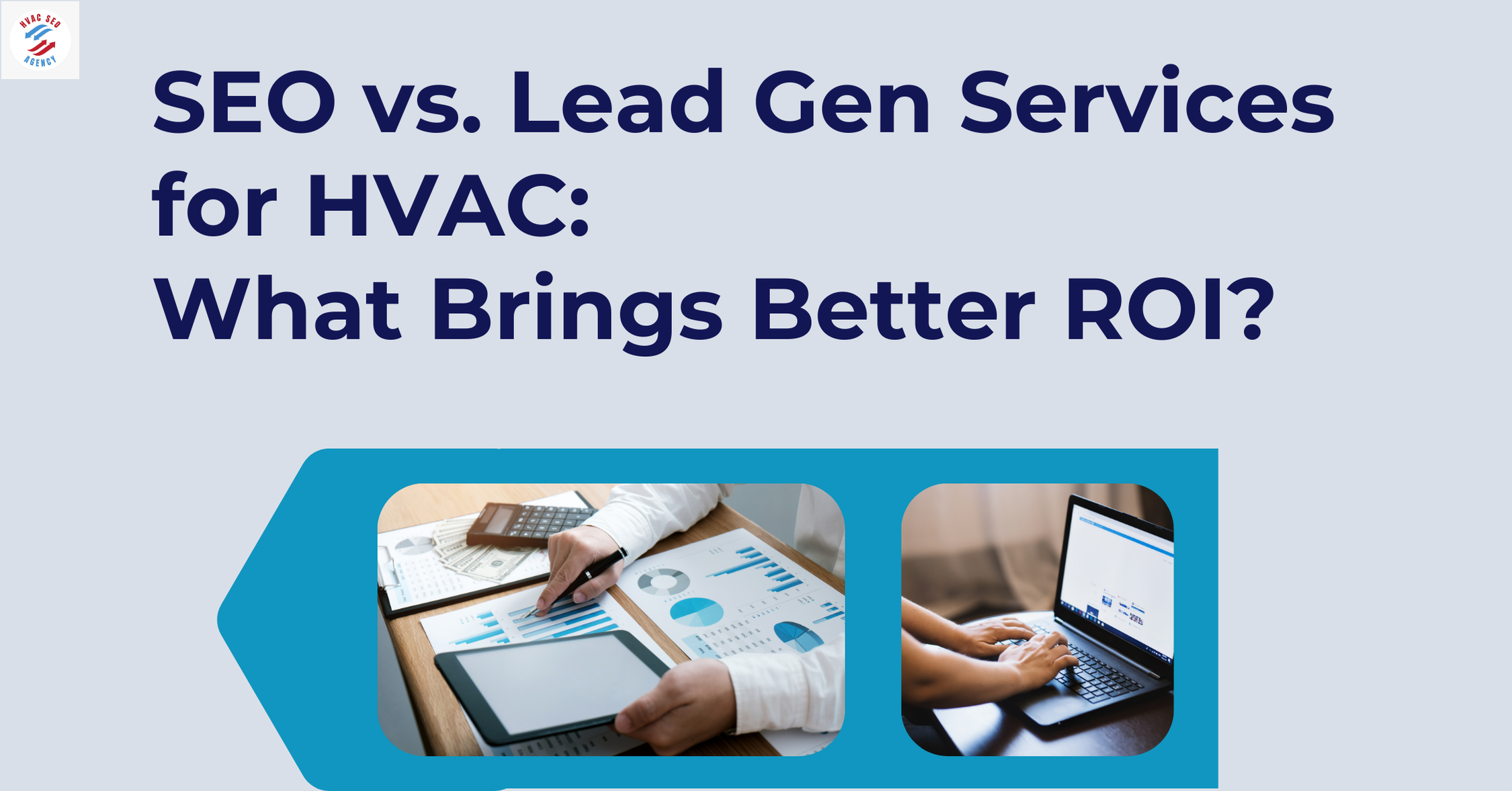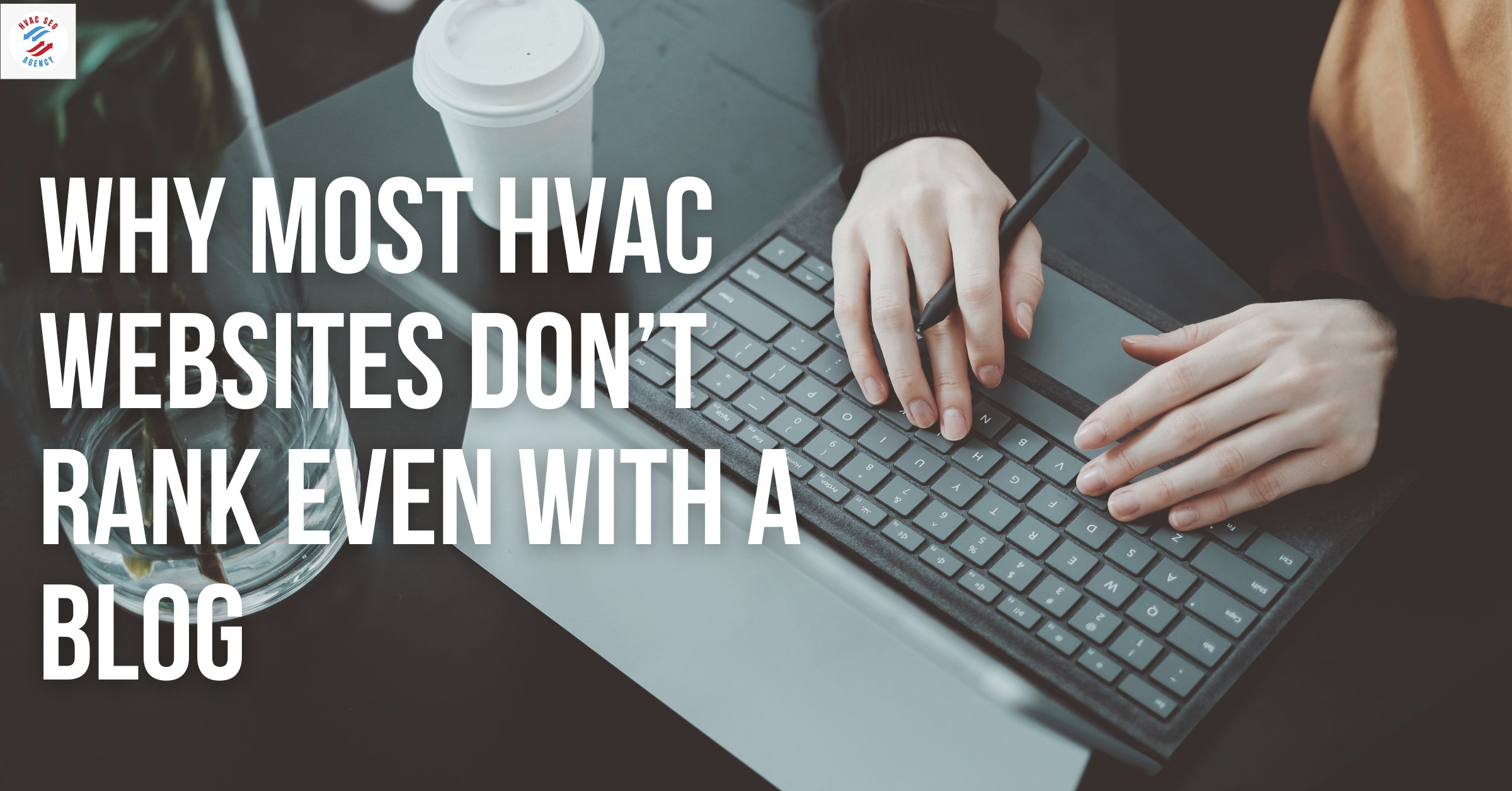How to Improve Customer Communication in Your HVAC Business

I. Why HVAC Customer Communication Is the Foundation of Business Growth
Effective HVAC customer communication is the backbone of success in the heating, ventilation, and air conditioning (HVAC) industry. A recent survey revealed that 73% of homeowners select their HVAC contractor based on past experiences, underlining the importance of maintaining consistent and trustworthy client relations in HVAC. Furthermore, 67% of homeowners rely on word-of-mouth recommendations demonstrating how valuable clear, professional communication is in growing your reputation and business footprint.
One of the most impactful ways to strengthen HVAC customer communication is by ensuring your online presence reflects your service quality. Partnering with an Affordable HVAC SEO Agency in Dallas can help local HVAC contractors optimize their outreach and connect with the right audience. These agencies focus on content optimization, technical SEO, and location targeting—strategies that drive more qualified leads from your service area.
In addition, Google My Business Optimization for HVAC is essential for boosting your visibility in local search results. When your Google listing includes up-to-date contact info, positive customer reviews, and service details, it enhances customer trust and increases the chances of being selected over competitors. Optimizing your profile also allows you to showcase excellent reviews—many of which are often tied directly to exceptional HVAC customer communication.
Table 1: Key Statistics on HVAC Customer Preferences
Furthermore, 93% of customers are likely to return to a business that provides excellent customer service . Conversely, 65% of customers have switched to a different brand due to poor customer experience .
Graph 1: Impact of Customer Service on Client Retention
In the competitive U.S. HVAC market, valued at $30.41 billion in 2023 and projected to grow at a 7.4% CAGR through 2030 , prioritizing HVAC customer communication is essential. This focus not only enhances client satisfaction but also drives business growth and revenue.
II. Understanding Customer Expectations in the HVAC Industry
In the HVAC industry, comprehending and meeting customer expectations is critical for fostering strong client relations in HVAC and achieving sustainable business growth. Today’s customers expect not just technical expertise, but also personalized, timely, and professional service at every touchpoint. Meeting these expectations consistently requires more than skilled technicians—it demands a communication-first approach.
One proven way to align with these evolving expectations is to build a strong referral network in the HVAC industry. Since 67% of homeowners still choose HVAC contractors based on word-of-mouth, investing in relationships with satisfied customers, local partners, and even complementary trades (like plumbers or electricians) is a high-impact, low-cost strategy. These referral networks thrive when HVAC companies prioritize responsiveness, clear communication, and post-service follow-up—all core aspects of excellent HVAC customer communication.
1. Importance of Personalized Service
Personalization has become a cornerstone of customer satisfaction. Studies indicate that 78% of younger consumers expect some level of personalized service from their representatives. This trend underscores the necessity for HVAC companies to tailor their services to individual client needs, enhancing overall customer experience.
2. Communication Preferences Across Generations
Effective communication is pivotal in client relations within the HVAC sector. A survey revealed that while approximately 58% of consumers prefer direct calls when contacting a new HVAC company, a significant 42% favor alternative methods such as email (20%), contact forms (14%), and direct messaging (8%). Notably, the preference for direct messaging is more prevalent among individuals aged 35 to 44.
Table 2: Preferred Initial Contact Methods for HVAC Services
Timeliness is a critical factor in customer satisfaction. Research indicates that 25% of consumers aim to schedule HVAC maintenance in advance. However, economic pressures have led 34% to delay essential services, highlighting the importance of proactive communication and flexible scheduling options to accommodate varying customer circumstances.
4. Consistency and Quality During Peak Seasons
Maintaining consistent service quality during peak periods is essential for customer retention. Nearly 46% of consumers identify inconsistent service quality during high-demand seasons as a key barrier to brand loyalty. This finding emphasizes the need for HVAC businesses to ensure reliability and efficiency, even during busy times.
Graph 2: Factors Influencing Customer Loyalty in HVAC Services
By understanding and addressing these customer expectations, HVAC companies can enhance client relations, leading to increased satisfaction, loyalty, and business growth.
III. Best Practices for Effective HVAC Customer Communication
Effective communication is the cornerstone of building strong client relations in HVAC. In today’s competitive landscape, delivering clear, responsive, and customer-focused communication directly impacts satisfaction, retention, and overall profitability. Applying the best practices for maximum efficiency in communication ensures HVAC businesses meet modern customer expectations while streamlining operations.
1. Personalize Customer Interactions
Personalized service significantly impacts customer satisfaction. A study revealed that 78% of younger consumers expect some level of personalized service from their representatives. Tailoring interactions to individual client needs fosters trust and loyalty.
2. Utilize Multiple Communication Channels
Diversifying communication channels caters to varying customer preferences. While 58% of consumers prefer direct calls, 20% favor email, 14% opt for contact forms, and 8% prefer direct messaging. Offering multiple avenues ensures accessibility and convenience for clients.
3. Implement Proactive Communication
Proactive communication addresses potential issues before they escalate. For instance, 25% of consumers aim to schedule HVAC maintenance in advance, but economic pressures have caused 34% to delay essential services. Reaching out with timely reminders and maintenance offers can help mitigate such delays.
4. Leverage Technology for Enhanced Communication
Integrating technology streamlines communication processes. Implementing customer relationship management (CRM) systems and automated scheduling platforms facilitates efficient interactions and service delivery.
5. Train Staff in Communication Skills
Investing in staff training ensures consistent and effective communication. Skilled technicians who communicate clearly and empathetically enhance customer satisfaction and contribute to positive client relations.
6. Seek and Act on Customer Feedback
Regularly soliciting and addressing customer feedback demonstrates a commitment to continuous improvement. This practice not only resolves individual concerns but also informs broader service enhancements.
Table 3: Preferred Communication Methods Among HVAC Customers
Implementing these best practices in HVAC customer communication strengthens client relations and positions your business for sustained success.
IV. Case Studies: Successful HVAC Customer Communication Strategies
Examining real-world examples provides valuable insights into effective HVAC customer communication strategies. The following case studies highlight how targeted communication efforts can enhance client relations and drive business growth.
1. Enhancing Brand Loyalty through Customer Perception Analysis
A leading U.S. air conditioning manufacturer sought to improve market share and customer loyalty. By conducting an in-depth customer perception analysis, the company identified areas for improvement in communication and service delivery. This strategic approach led to enhanced brand loyalty and a projected increase in market share.
2. Boosting Efficiency with Digital Communication Tools
The BTU Group, managing 70 engineers across 20,000 buildings, faced challenges in service consistency and customer satisfaction. Transitioning from paper-driven workflows to an electronic system streamlined communication between call center staff and field engineers. This shift improved service delivery and client relations.
3. Leveraging Case Studies to Attract New Clients
Mar-Hy Distributors emphasized the importance of using detailed case studies to showcase successful projects. By highlighting specific solutions and quantifiable outcomes, HVAC companies can demonstrate expertise and build trust with potential clients, effectively enhancing client relations.
4. Increasing Organic Traffic through Strategic Communication
Patrick Riley & Isley's HVAC business implemented targeted communication strategies, resulting in a 35% surge in organic traffic during their peak season. This increase translated to higher customer engagement and potential revenue growth.
5. Achieving High ROI with Focused Marketing Communication
An HVAC company utilized pay-per-click (PPC) advertising combined with customized landing pages to enhance customer communication. Over 24 months, they averaged 125 leads per month at a cost per lead under $15, achieving approximately $18.38 profit for every $1 spent. This approach significantly boosted client relations and revenue.
Table 4: Impact of Communication Strategies on HVAC Business Outcomes
These case studies illustrate the tangible benefits of effective HVAC customer communication strategies, emphasizing their role in enhancing client relations and driving business success.
V. Leveraging HVAC SEO Agencies for Enhanced Lead Generation and Revenue Growth
In today's digital era, establishing a robust online presence is crucial for HVAC businesses aiming to enhance lead generation and drive revenue growth. Partnering with specialized HVAC SEO agencies offers targeted strategies to achieve these objectives effectively.
1. The Role of HVAC SEO Agencies
HVAC SEO agencies specialize in optimizing HVAC companies' online visibility, ensuring they rank prominently in search engine results. This optimization increases the likelihood of attracting potential clients actively searching for HVAC services. By focusing on industry-specific keywords and local SEO tactics, these agencies help businesses connect with their target audience more efficiently.
Effective SEO strategies significantly boost lead generation for HVAC companies. For instance, HVAC businesses with SEO-optimized websites receive 3.5 times more leads than those without such optimization. This increase is attributed to improved search engine rankings and enhanced online visibility, making it easier for potential customers to find and engage with the business.
3. Revenue Growth Through SEO
Investing in SEO not only increases leads but also translates into substantial revenue growth. A notable case study revealed that an HVAC and plumbing company generated $2.5 million in revenue within eight months by implementing a comprehensive SEO strategy. This approach included optimizing existing web pages, publishing new SEO-optimized content, and enhancing technical SEO factors.
4. Case Studies Highlighting SEO Success
American Vintage Home: By adopting a hyper-local SEO strategy, this HVAC and plumbing company experienced unprecedented results, including significant revenue growth and increased market presence.
Paul The Plumber: Over three years, this company expanded from five to ten trucks and increased annual revenue from $1.5 million to over $3 million after collaborating with an HVAC SEO agency. This growth enabled them to broaden their service area and offerings.
5. Key SEO Strategies Implemented by Agencies
HVAC SEO agencies employ various strategies to enhance online visibility and business growth:
Local SEO Optimization: Ensuring the business appears in local search results, crucial as 46% of all Google searches seek local information.
Content Marketing: Developing high-quality, relevant content that addresses common customer queries and positions the business as an industry authority.
Technical SEO: Improving website speed, mobile responsiveness, and overall user experience to meet search engine standards.
Reputation Management: Encouraging satisfied customers to leave positive reviews, enhancing the company's credibility and attracting new clients.
VI. Training Programs for Enhancing HVAC Customer Communication
Investing in comprehensive training programs is essential for HVAC businesses aiming to improve HVAC customer communication and strengthen client relations in HVAC. Effective communication training equips technicians with the skills necessary to enhance customer satisfaction, leading to increased loyalty and business growth.
1. Importance of Customer Service Training
Customer service training teaches HVAC technicians how to communicate effectively with customers, listen to their needs, and handle difficult situations professionally. This training is vital as technicians often work in customers' homes or offices, requiring them to be friendly, polite, and punctual.
2. Impact on Business Performance
Implementing customer service training programs has a direct positive effect on business performance. Companies offering comprehensive training programs have been shown to have 218% higher income per employee compared to those without such programs.
3. Case Studies Demonstrating Success
Arthur's Air Conditioning and Heating: By adopting a structured training program, this residential HVAC company achieved a 20% increase in revenue within three months. The training led to a reduction in callback rates from 12% to 2%, demonstrating the effectiveness of investing in employee development.
T.E. Spall & Son: This company reduced callbacks by 25% after implementing targeted training content, enhancing operational efficiency and customer satisfaction.
4. Available Training Programs
Several organizations offer specialized customer service training tailored for HVAC professionals:
ServiceSkills: Provides affordable, comprehensive training programs with actionable advice for handling real-life customer service scenarios in HVAC businesses.
ESCO Group: Offers the "HVAC Customer Service Handbook," a resource used in over 120 colleges across the USA and Canada, focusing on customer service and soft skills training.
5. Benefits of Ongoing Education
Continuous education in customer service ensures that HVAC technicians remain adept at meeting evolving customer expectations. Ongoing training leads to increased customer satisfaction, repeat business, and positive word-of-mouth referrals, all contributing to sustained business growth.
Table 5: Impact of Customer Service Training on HVAC Business Metrics
By prioritizing customer service training, HVAC businesses can enhance HVAC customer communication, strengthen client relations in HVAC, and achieve significant improvements in customer satisfaction and overall business performance.
VII. Integrating Technology to Enhance HVAC Customer Communication
In the rapidly evolving HVAC industry, adopting advanced technologies is essential for improving HVAC customer communication and strengthening client relations in HVAC. Implementing tools such as field service management software, artificial intelligence (AI), and mobile technology can significantly enhance customer interactions and operational efficiency.
1. Adoption of Field Service Management Software
Field service management software streamlines operations by automating scheduling, dispatching, and customer communication. Approximately 70% of field service organizations have integrated such software, reflecting its widespread acceptance and importance in maintaining competitiveness.
2. Impact of Mobile Technology on Customer Engagement
Mobile technology facilitates real-time communication between HVAC technicians and customers, leading to improved service delivery. Notably, 57% of online traffic originates from smartphones and tablets, underscoring the necessity for mobile-friendly communication platforms.
3. Artificial Intelligence Enhancing Customer Service
AI technologies, including machine learning, analyze customer data to provide personalized recommendations and predictive maintenance alerts. This proactive approach enhances customer satisfaction and loyalty.
4. Growth of Smart HVAC Systems
The integration of Internet of Things (IoT) devices in HVAC systems enables real-time monitoring and remote control, improving energy efficiency and customer convenience. The global adoption of smart home technology is projected to reach 57% by 2025, indicating a significant shift towards connected HVAC solutions.
Table 6: Technological Adoption in the HVAC Industry
By integrating these technologies, HVAC businesses can enhance HVAC customer communication, improve client relations in HVAC, and achieve greater operational efficiency and customer satisfaction.
VIII. Future Trends in HVAC Customer Communication
As the HVAC industry evolves, staying ahead of emerging trends in HVAC customer communication is crucial for maintaining strong client relations in HVAC. Anticipating and adapting to these changes can enhance customer satisfaction and drive business growth.
1. Integration of Artificial Intelligence (AI) and Automation
AI and automation are transforming customer interactions by enabling personalized and efficient communication. HVAC companies are increasingly utilizing AI-driven chatbots and automated systems to handle inquiries, schedule appointments, and provide tailored recommendations, enhancing the overall customer experience.
2. Emphasis on Visual and Interactive Content
Visual marketing, including videos and interactive content, is becoming a key strategy for engaging customers. Short videos demonstrating HVAC system operations, maintenance tips, and installation processes help demystify complex concepts and build trust with clients. Interactive tools, such as virtual walkthroughs or 3D visualizations, allow customers to explore products and services more comprehensively.
3. Prioritization of Sustainability in Communication
With a growing focus on environmental responsibility, customers are increasingly interested in sustainable HVAC solutions. Communicating a company's commitment to sustainability, energy efficiency, and eco-friendly practices resonates with environmentally conscious consumers and can differentiate a business in a competitive market.
4. Leveraging Social Media Platforms
Social media continues to be a powerful tool for HVAC brands to connect with younger audiences and contractors. Platforms like Instagram and TikTok offer opportunities for visual storytelling, showcasing installation processes, product benefits, and behind-the-scenes content to engage and inform followers.
5. Adoption of Smart HVAC Systems
The rise of smart HVAC systems equipped with IoT capabilities allows for real-time monitoring and control, enhancing customer convenience and system efficiency. These systems can provide users with timely information and alerts, facilitating proactive maintenance and improved communication between service providers and clients.
6. Focus on Indoor Air Quality (IAQ)
Post-pandemic, there is heightened awareness and demand for improved indoor air quality. HVAC companies are emphasizing IAQ solutions in their communication strategies, educating customers on the benefits of advanced filtration systems, air purifiers, and regular maintenance to ensure healthier indoor environments.
By embracing these trends, HVAC businesses can enhance their customer communication strategies, strengthen client relationships, and position themselves for success in a rapidly evolving industry.
IX. Overcoming Challenges in HVAC Customer Communication
Effective HVAC customer communication is essential for building strong client relations in HVAC. However, the industry faces several challenges that can hinder effective communication. Addressing these challenges is crucial for enhancing customer satisfaction and business success.
1. Technician Shortages Impacting Service Delivery
The HVAC industry is currently experiencing a significant shortage of skilled technicians, with a deficit of approximately 110,000 professionals and an annual departure of about 25,000. This shortage can lead to delays in service delivery, negatively affecting customer satisfaction and communication.
2. Delays Leading to Negative Customer Feedback
Timely service is critical in maintaining positive customer relations. Delays have been identified as the cause of 55% of negative HVAC reviews, highlighting the importance of efficient scheduling and prompt communication with clients.
3. Generational Differences in Communication Preferences
Customers have varying preferences for communication channels. A survey indicates that 47% of clients prefer phone communication, while 14% favor digital scheduling through websites or apps. Balancing these preferences is essential to meet diverse customer expectations.
4. Addressing Negative Online Reviews
Online reviews significantly influence consumer decisions, with 82% of consumers affected by negative reviews and 91% influenced by positive ones. Proactively managing online feedback and maintaining open communication channels can help mitigate the impact of negative reviews.
5. Implementing Effective Communication Strategies
To overcome these challenges, HVAC companies can adopt several strategies:
Utilize Unified Communication Technologies: Implementing integrated communication platforms can streamline interactions and reduce response times.
Enhance Customer Service Training: Providing training focused on effective communication skills can improve interactions and customer satisfaction.
Leverage Telematics Data: Using telematics can improve scheduling, dispatching, and proactive customer communication, enhancing overall service delivery.
Monitor and Respond to Online Reviews: Actively managing online reviews and addressing customer feedback can help maintain a positive reputation and build trust.
By proactively addressing these challenges, HVAC businesses can enhance HVAC customer communication, strengthen client relations in HVAC, and improve overall customer satisfaction.
X. Implementing Feedback Systems to Enhance HVAC Customer Communication
Establishing robust feedback systems is essential for improving HVAC customer communication and strengthening client relations in HVAC. By actively soliciting, analyzing, and responding to customer feedback, HVAC businesses can enhance service quality, increase customer satisfaction, and foster long-term loyalty.
1. Importance of Customer Feedback
Customer feedback provides valuable insights into service performance, highlighting areas of excellence and those requiring improvement. Regularly collecting and acting upon this feedback demonstrates a commitment to customer satisfaction and continuous improvement.
2. Methods for Collecting Feedback
Post-Service Surveys: Distribute surveys via email or SMS after service completion to gather immediate customer impressions.
Online Reviews: Encourage satisfied customers to leave reviews on platforms such as Google, Yelp, and industry-specific sites.
Social Media Engagement: Monitor and respond to comments and messages on social media channels to understand customer sentiments.
Direct Communication: Implement follow-up calls or emails to discuss the customer's experience and address any concerns.
3. Analyzing and Acting on Feedback
Collecting feedback is only beneficial if it leads to actionable insights:
Identify Common Themes: Look for recurring issues or praises to understand systemic strengths or weaknesses.
Develop Improvement Plans: Create strategies to address identified issues, such as additional training for technicians or process enhancements.
Communicate Changes to Customers: Inform customers about improvements made in response to their feedback, reinforcing their value to the company.
4. Benefits of Implementing Feedback Systems
By integrating effective feedback systems, HVAC businesses can proactively enhance HVAC customer communication, leading to improved client relations in HVAC, higher customer satisfaction, and sustained business growth.
FAQs: HVAC Customer Communication and Client Relations in HVAC
Q1. Why is HVAC customer communication important?
Effective HVAC customer communication builds trust, enhances client satisfaction, and directly impacts customer retention and revenue. Good communication leads to fewer misunderstandings, faster service delivery, and better reviews.
Q2. How can HVAC businesses improve client relations?
Businesses can improve client relations in HVAC by offering personalized service, using multiple communication channels (calls, emails, texts), training staff in soft skills, and responding proactively to feedback and reviews.
Q3. What role do HVAC SEO agencies play in client communication?
HVAC SEO agencies improve a business’s online visibility, helping it appear in local searches and build credibility through reviews and content. This increases lead generation and ensures your communication efforts reach the right audience.
Q4. How does technology help in HVAC customer communication?
Technology such as CRM software, AI-powered chatbots, mobile apps, and smart HVAC systems streamline communication, automate updates, and allow for real-time interaction with customers, improving satisfaction and efficiency.
Q5. What is the best way to handle negative reviews in HVAC?
Respond to negative reviews promptly, professionally, and constructively. Offer solutions and take responsibility where necessary. Demonstrating accountability publicly can turn a dissatisfied customer into a loyal one and build trust with potential clients.
Q6. Why should HVAC businesses invest in communication training?
Technicians are the face of the business. Communication training ensures they can handle customer concerns, explain technical issues clearly, and maintain professionalism—leading to better client relations and fewer service callbacks.
Q7. What communication method do most HVAC clients prefer?
According to industry surveys, around 58% of HVAC clients prefer direct phone calls, followed by email, contact forms, and text messaging. Offering flexibility helps cater to various preferences.
Conclusion: Elevating Your HVAC Business Through Strategic Communication
Improving HVAC customer communication is not just about polite conversations—it’s a strategic business move that influences every stage of the customer journey. From the first inquiry to post-service follow-up, every touchpoint matters.
This blog has covered the foundational role of communication in building trust, generating leads, and driving revenue. It’s clear that HVAC companies that prioritize personalized service, invest in staff training, adopt modern technologies, and work with expert HVAC SEO agencies are better positioned to dominate their local markets.
By enhancing client relations in HVAC, your business not only improves satisfaction and retention but also unlocks new levels of operational efficiency, brand reputation, and long-term growth.
Start implementing these strategies today to create a customer experience that sets your HVAC business apart in a competitive U.S. marketplace.


